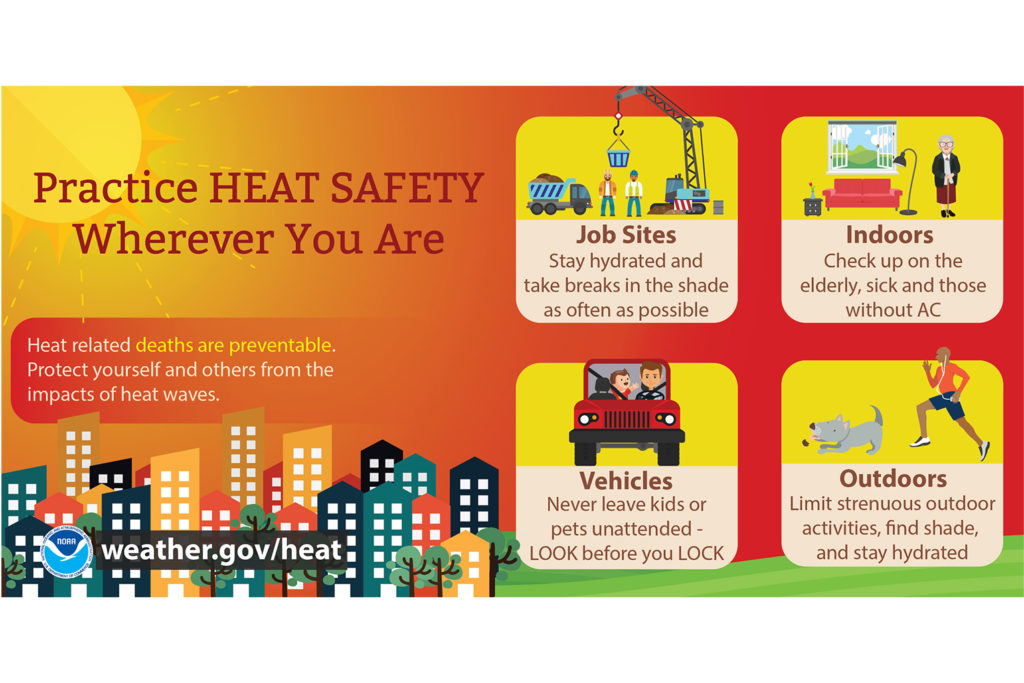Heat is the leading cause of weather-related deaths most years. Learn more below about how to stay safe in the heat.
During hot and humid weather, your body works hard to cool itself. When your body heats too rapidly to cool itself properly, or when too much fluid or salt is lost through dehydration or sweating, you may experience a heat-related illness. When it is hot, wear lightweight, loose-fitting and light-colored clothing to reflect heat and sunlight. Hats are also a good idea to protect your face and scalp from harmful UV rays if you will be spending time directly in the sunshine. Also, don’t forget to apply sunscreen liberally.
You are generally safe indoors with the AC on, while staying hydrated. If you can’t easily get indoors, stay in the shade.
Even after the sun goes down, heat can be a real danger – especially in large cities. Known as an Urban Heat Island, dark pavement and buildings are very effective at absorbing heat. After the sun goes down, high temperatures linger throughout the nighttime due to warm brick and other building materials retaining heat.
Do you know your state’s hottest recorded temperature? In California, that was 134°F on July 10, 1913 in Death Valley. In fact, that is the hottest air temperature ever recorded on Earth. The next two highest U.S. recorded temperatures both came on June 9, 1994 in Arizona (128°F) and Nevada (125°F). To view your state’s highest temperature (along with other extreme weather records), visit ncdc.noaa.gov/extremes/scec/records
Prepare now for the heat season. Learn where you can go to stay cool if needed. If you think you may need to go to a public cooling shelter, check with local authorities to see which ones are open this year. Remember to ask yourself these four questions before working or playing outdoors:
Visit Weather.gov to learn more about staying safe in the heat!
